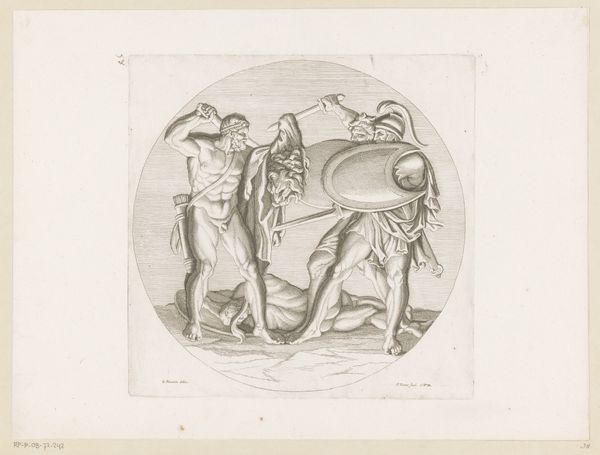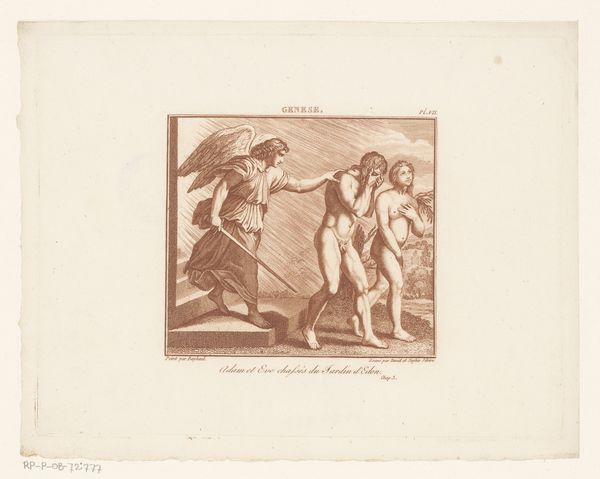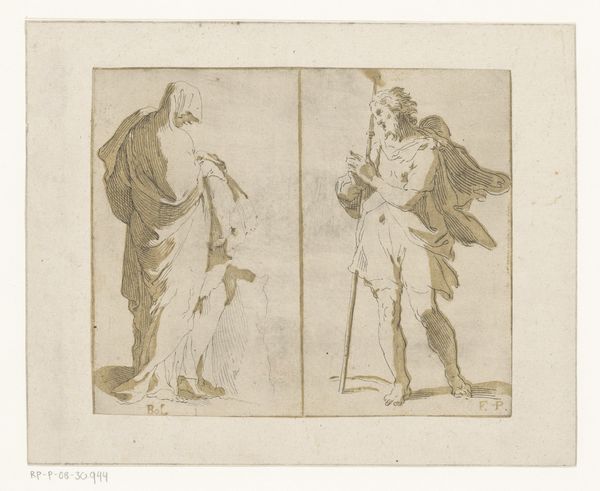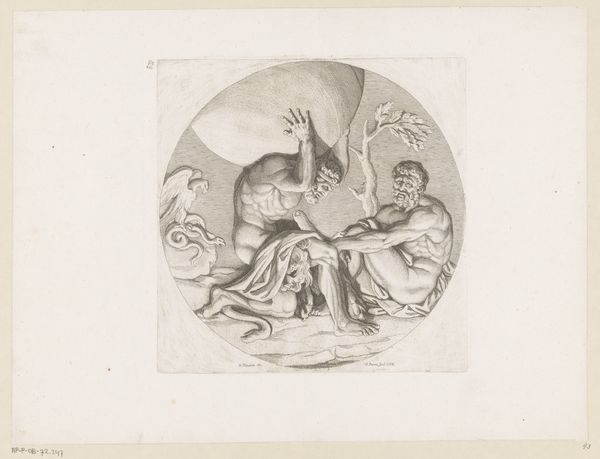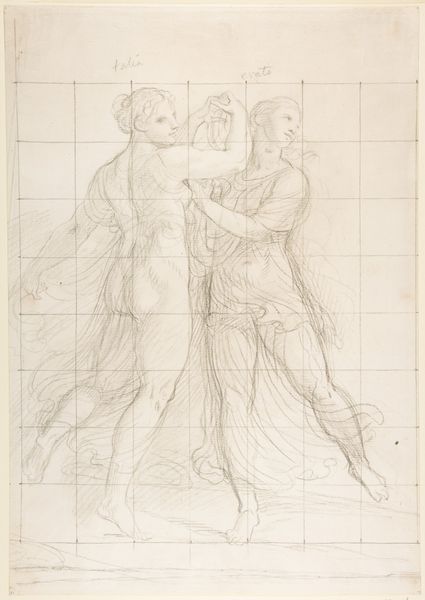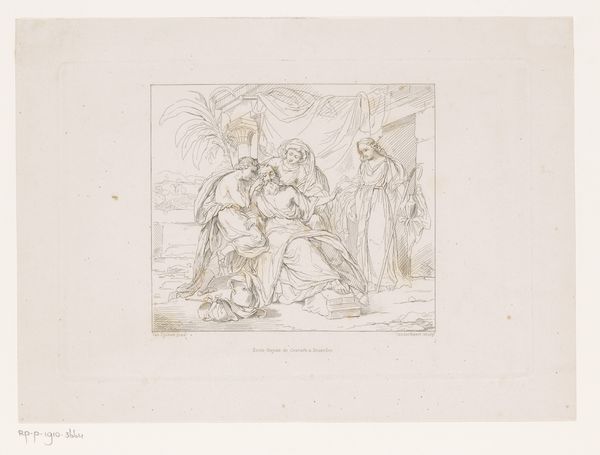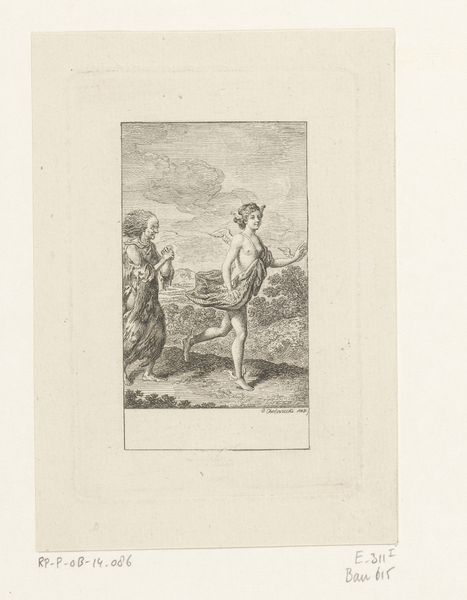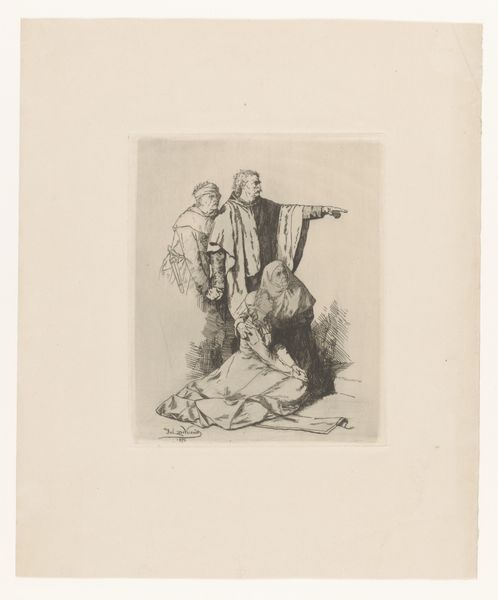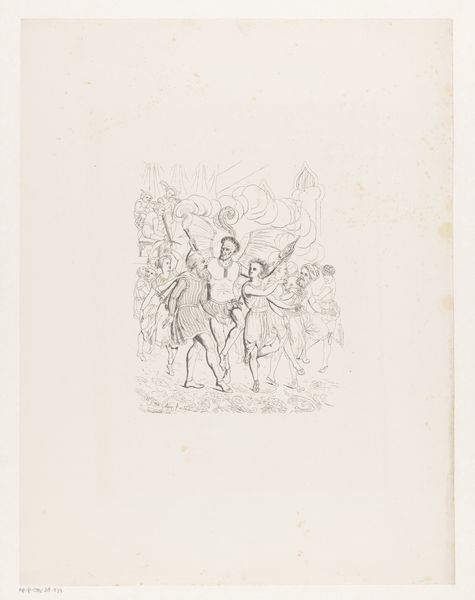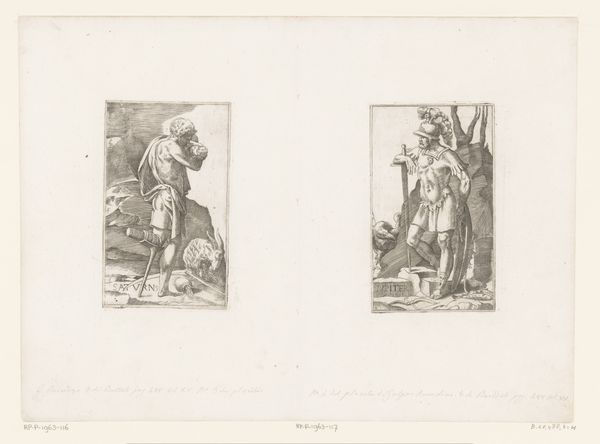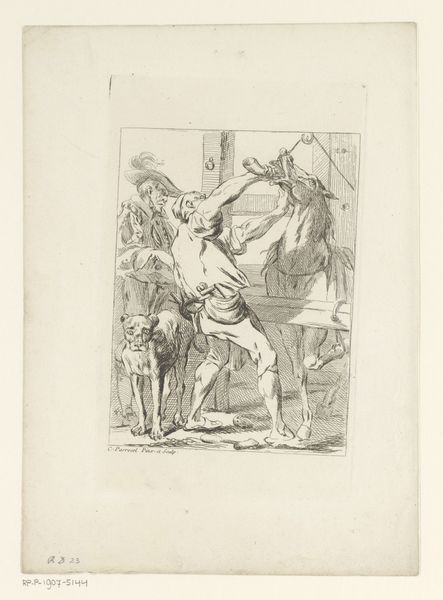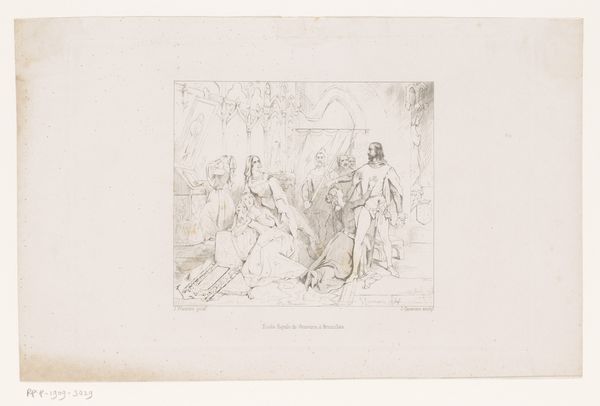
drawing, print, engraving
#
drawing
#
light pencil work
#
baroque
# print
#
pencil sketch
#
old engraving style
#
classical-realism
#
figuration
#
personal sketchbook
#
idea generation sketch
#
ink drawing experimentation
#
sketchbook drawing
#
pencil work
#
history-painting
#
storyboard and sketchbook work
#
sketchbook art
#
engraving
Dimensions: height 294 mm, width 286 mm
Copyright: Rijks Museum: Open Domain
Curator: So, here we have Jean Pesne's "Chiron teaching Hercules Archery," an engraving dating back to 1678. My first impression is one of hushed reverence—the delicacy of the lines evokes a scene caught in a breath. Editor: It's definitely precise, but it's not just about capturing a heroic scene, is it? This engraving exists within a system of printmaking, disseminating images, ideologies, perhaps even training artists. How many impressions were made, what was the paper like, and who was consuming this image? Curator: That’s fascinating to consider, the journey of its creation and reception! For me, it's the intimacy of the scene; Chiron’s guiding hand, Hercules' focused gaze—they transcend the physical print itself. I find myself wondering about the passing of knowledge and mentorship between two figures representing two forms of wisdom. Editor: I am immediately struck by the material choices, which offer clues to understand cultural consumption and labor dynamics: paper, ink, the engraver's tools. These were all commodities shaped by broader trade networks and available techniques that also reveal societal values and assumptions. Also note that even this print, as ethereal as it may feel, reproduces yet another reproduction of classical models, ideas passed through time thanks to this precise distribution. Curator: So, this is not merely the scene depicted—but the means and circulation of its depiction that captures your imagination? For me, that circular frame isolates a shared moment in the woods—a concentrated universe, full of potential— like the hero's taut bowstring before the arrow flies. Editor: Absolutely. Because we can’t separate the myth from the means through which it was produced. It reveals as much about the skills and technology available at the time as about its intended subject. Think of the cultural prestige such objects offered, or even simply about how such trades might have helped propel globalism and commodification. It is a far cry from the supposed inspiration. Curator: Ultimately, an object like this can only achieve enduring interest for us once the labor embedded within its construction coalesces with what such image truly suggests, no? How the delicate network of etched lines speaks of learning, craft, power... and allows us to imagine how one era speaks across ages to another? Editor: Exactly. Perhaps by seeing a mythological depiction become just the evidence for so much hidden work can we give the image its final symbolic arrowshot. Curator: Nicely said. Thanks to Pesne's lines—and the matrix of materials behind it all—the conversation lives on.
Comments
No comments
Be the first to comment and join the conversation on the ultimate creative platform.
